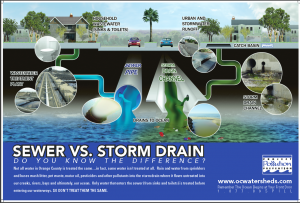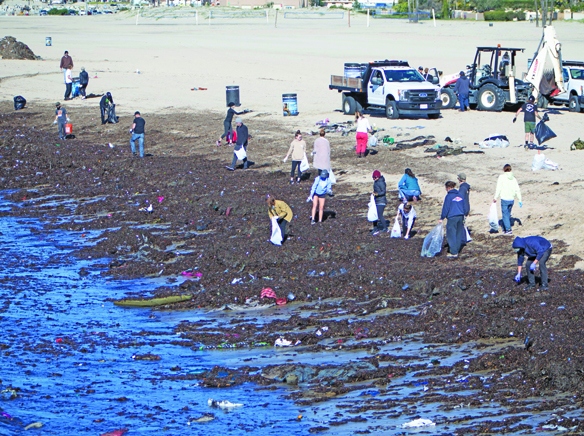Few residents understand the massive impact storm drains have on the quality of our coasts and oceans, a Los Al planner told the city’s Planning and Zoning Commission.
There are no filters for water entering storm drains and the Pacific Ocean said Associate Planner Tom Oliver, who gave the Commission its annual federal training this week.
While water discharged into a sewer drain gets scrubbed and cleaned before it is released into rivers, then the ocean, he said pollutants, and substances that enter storm drains are deposited directly into the ocean.
In providing the city’s annual training, Oliver said the NPDES (National Pollutant Discharge Elimination System) requires updated training as they seek to prevent homeowners, construction companies and commercial enterprises from making unlawful discharges.
The EPA program requires local compliance as the city’s planning department oversees local compliance he said.
Oliver said the city maintains its own permit for storm water drainage and is the local compliance authority for commercial enterprises in the city that require their own water quality management plans.
The National Pollutant Discharge Elimination System (NPDES) is a permit program that addresses water pollution by regulating the sources that discharge pollutants to the waterways of the United States. Created in 1972 by the Clean Water Act, the NPDES permit program authorizes state governments through the Environmental Protection Agency to perform many permitting, administrative, and enforcement aspects of the program.
The City of Los Alamitos’ local umbrella NPDES agency is the Santa Ana Regional Water Quality Board, or SARWQB, Oliver said.
As a part of fulfilling the City’s local NPDES requirements mandated by the SARWQB, the city supports implementation of a countywide public education program called H20C, to enhance the likelihood that key messages pertaining to NPDES will be noticed.
Also, the goal is to have target audiences adopt behaviors protective of water quality.
According to the city, H20C serves as the education and outreach campaign, providing unified messaging and combined media buying power that could not be achieved by the city and individual permit holders.
Oliver said NPDES is a local government’s tool to help protect the water that enters a storm drain from carrying pollutants directly to the ocean. Protecting water quality requires raising public awareness and fostering environmentally protective public behavior, according to the commission.
The City of Los Alamitos supports the countywide public education effort through financial contributions, participation in the Public Education Sub-Committee, and the use of countywide materials, thematic messages and common H20C brand.
 The City’s public education and outreach program targets 100% of the residents, including businesses, commercial and industrial establishments. The City supplements the countywide campaign at a local level through public educational material distribution, and outreach to the community through presentation.
The City’s public education and outreach program targets 100% of the residents, including businesses, commercial and industrial establishments. The City supplements the countywide campaign at a local level through public educational material distribution, and outreach to the community through presentation.
Oliver said city officials routinely inspect ongoing operations for compliance and he listed the most common violations by neighborhoods and residents.
The lack of filters become painfully obvious during periods of heavy rains, said Oliver, when storm drains flow into the St. Gabriel river, sending water carrying tons of trash, shopping carts, clothing and everything else directly towards the ocean.
By adhering to the NPDES system, Oliver said, the city does everything possible to prevent trash from reaching the Pacific.

